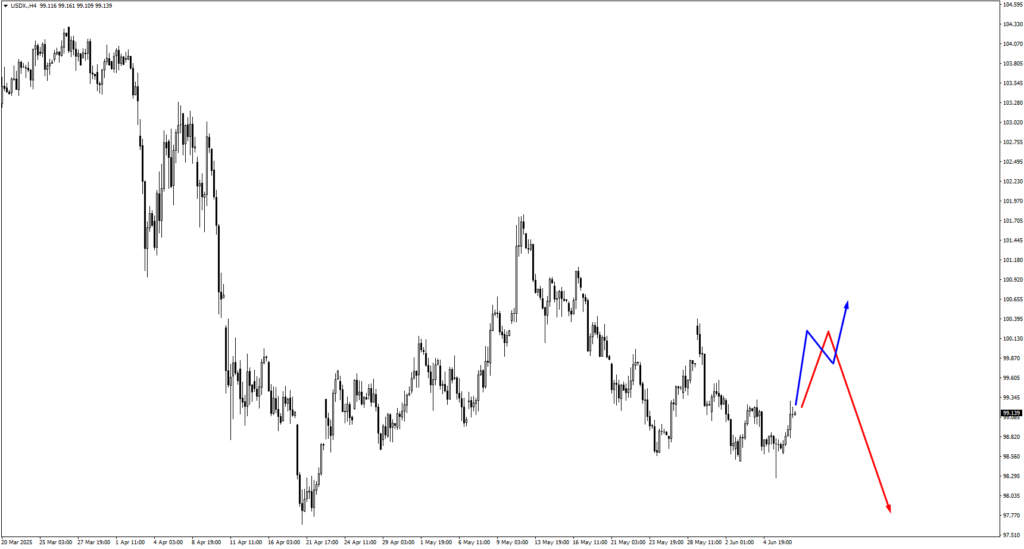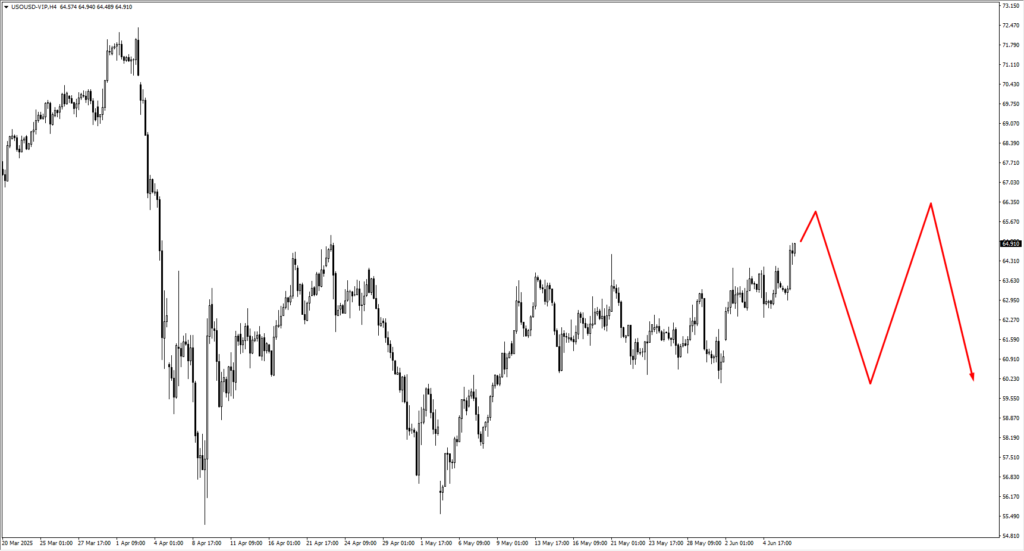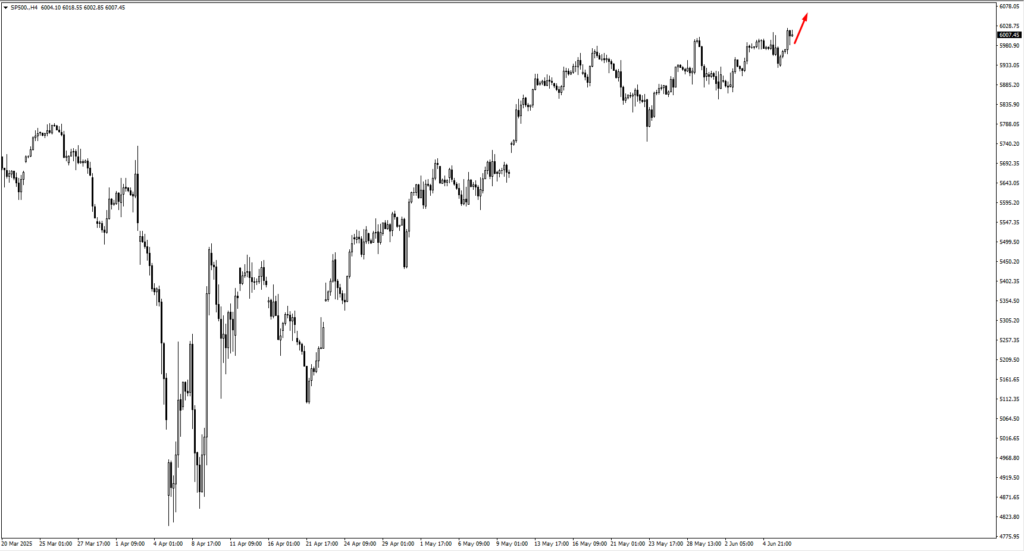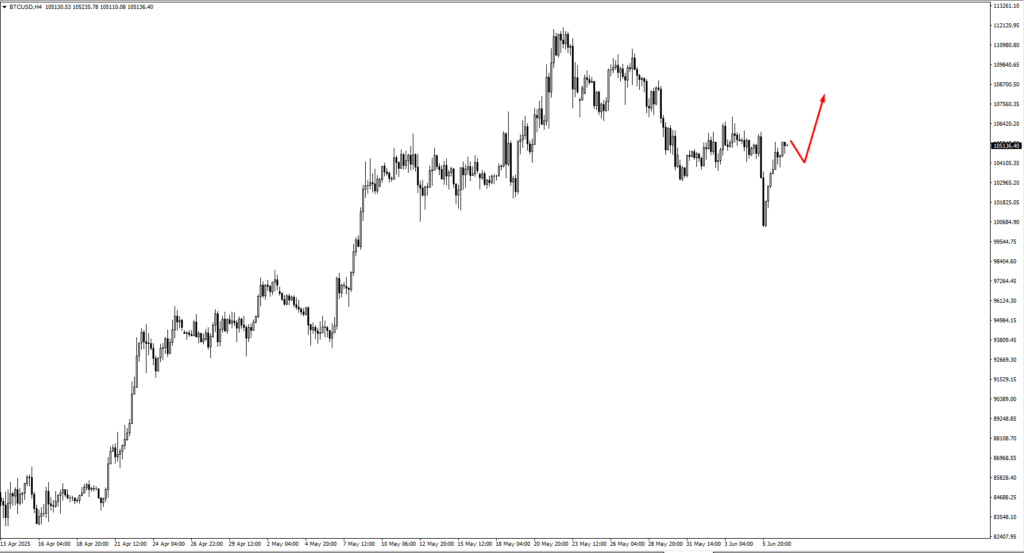
After a red-hot close to the previous week, the financial markets entered Monday with a cautious sense of optimism. Traders were still digesting Friday’s upbeat labour report, which revealed that the U.S. economy added 139,000 jobs in May, exceeding expectations of 125,000.
While that headline number buoyed equities to fresh highs, including an S&P 500 close above 6,000, the underlying revisions to prior data painted a more tempered picture. A net downward revision of 95,000 jobs over the previous two months subtly signalled that while the engine of job creation still hums, the speed may be easing.
Wages tell a more complex story. Average hourly earnings rose 0.4% month-on-month and 3.9% year-on-year. These figures suggest consumers are continuing to gain purchasing power, outpacing inflation for now. That should support discretionary spending and retail resilience heading into the summer. But the question lingers: can this continue if business sentiment begins to fray under trade policy uncertainties?
Inflation, the ever-present spectre for markets and central banks alike, is still behaving. Headline CPI currently stands at the lowest rate since early 2021, holding at 2.3% year-on-year, while core inflation has eased to 2.8%
That’s not far off the Federal Reserve’s 2% target and suggests the price landscape is returning to a manageable rhythm. Notably, consumer inflation has not been re-ignited by wage increases or tariff implementation. For now, inflation appears largely under control, but the structure of that calm deserves scrutiny.
Fed Holds the Door
A key reason for the muted inflationary pulse may lie in how businesses have prepared for tariff changes. Many companies reportedly front-loaded shipments earlier this year, importing goods ahead of expected tariff hikes. This stockpiling has padded inventories and temporarily absorbed price pressures. That means the real inflationary consequence of tariffs might still be en route, though delayed rather than defused. The markets know this. They are watching.
The Federal Reserve, for its part, remains stationary. Despite President Trump’s vocal demands for an aggressive 100 basis point rate cut, the Fed remains unmoved. With unemployment low and inflation moderate, the justification for immediate monetary easing is thin.
CME FedWatch data indicates a 0% probability of a rate cut at the June 17–18 FOMC meeting. Traders are instead pricing in a first cut in September, with a second by year-end if the economic data continues to lean dovish.
This patient “wait-and-see” stance by the Fed reflects the balance it must maintain. Push too soon, and it risks undermining credibility. Move too late, and it could dampen growth just as external shocks (like tariffs) begin to bite. For now, the Federal Reserve holds its line, guided by economic fundamentals rather than political rhetoric.
Trade Tightrope
The real volatility trigger remains trade policy. Trump’s recent confirmation that U.S.–China talks will resume in London has offered the markets a momentary reprieve. Stocks rallied on the hope that diplomacy might prevail, but this optimism is balanced by corporate hesitation.
Across industries, major firms have delayed hiring and capital expenditure as they await clarity on tariff structures. That hesitation might begin to show up in the next wave of earnings guidance and capex reports.
This leaves traders walking a tightrope, though concerns have stabilised for now with solid jobs data and muted inflation. On June 6, both the Dow Jones and Nasdaq climbed over 1%, a reaction to the May payrolls surprise. But just as quickly as they surged, equities could stumble if negotiations sour or inflation ticks unexpectedly upward once tariffs ripple through inventories.
Bond markets reflect this unease. Treasury yields have climbed modestly in response to the hot jobs report, with the anticipation that the Fed will delay rate cuts. But any signs of cooling momentum or poor inflation prints in upcoming data could reverse that move, pulling yields lower again.
Caution, then, remains the order of the day. Market participants are playing the mid-2025 tape with a blend of restraint and readiness. If the tariff delays truly buy time and trade negotiations in London yield progress, the case for late-year Fed cuts remains intact. If talks stall, inventories may dry up, and consumers will begin to feel the pinch. Markets may need to reprice the cost of risk once again.
Key Movements of the Week
Given the underlying strength in labour markets and the Fed’s current policy stance, we’re approaching the charts with a balanced view. While sentiment remains cautiously bullish, technical structures across major pairs and commodities are beginning to hint at potential inflection zones. Let’s examine where price is leaning and where it might break.
The U.S. Dollar Index (USDX) climbed just above the 98.00 zone we’ve been monitoring. At this juncture, price appears poised to either consolidate near-term before pulling back, or continue higher into the 99.80–100.50 region. That next range becomes critical. Price action there will determine whether we’re shaping a broader bullish continuation pattern or setting up for a medium-term reversal. With the Fed holding steady and inflation in check, the dollar is trading more on positioning and global demand for safety than on yield dynamics alone.
EURUSD has slipped just below the 1.1520 zone, with 1.13564 now the key support. A break below may trigger broader downside, while a bounce could signal consolidation. We’re watching closely for structure confirmation at this level, maintaining a neutral stance until direction resolves.
GBPUSD sits just below 1.3600, with attention on 1.3460 and 1.3440 as key support levels. A break lower could trigger a broader correction, while a bounce may signal consolidation. With the dollar firm and risk sentiment cautious, we remain neutral-to-bearish until clearer structure emerges at these thresholds.
USDJPY has been grinding higher, forming what could be a larger consolidation on the weekly scale. We are eyeing the 145.75 and 146.60 levels next. A rejection at either zone, with clear bearish structure, could offer a cleaner short-side play. However, the yen remains the weakest major currency structurally, and unless yields fall sharply, further upside is not off the table.
USDCHF also continues to lean into a consolidation phase. Our eyes are on the 0.8275 zone for signs of bearish exhaustion. If momentum stalls there and structure turns, we may see short setups develop, though the Swiss franc remains fundamentally driven by safe haven flows, especially during tariff flare-ups.
AUDUSD and NZDUSD both printed new swing highs recently but have pulled back. For AUDUSD, 0.6460 becomes the pivot for any bullish setups. For NZDUSD, we’ll look to 0.5960. Both pairs are still largely tracking broader risk appetite and commodity sentiment—watch copper and oil as secondary indicators.
USDCAD remains in a broader up-channel structure. If price consolidates into the 1.3750–1.3780 zone and fails to break higher, we will consider bearish opportunities. Crude oil stability could also cap further CAD weakness.
Speaking of oil, USOIL has finally begun to lift, but we remain cautious. The current move may be part of a larger consolidation. The 66.10 level is key: if price rejects there, we may see another corrective leg lower before more stable directional movement resumes. The market remains highly sensitive to geopolitical supply disruptions and trade-related demand forecasts.
Gold has been less convincing. Price failed to hold higher levels and has now revisited 3310. We anticipate a consolidation phase, with potential bearish setups at 3340. On a downward move, we are watching 3295 and 3265 for bullish price action support. Gold’s behaviour continues to reflect a lack of fear—there is no flight to safety just yet.
The S&P 500, on the other hand, continues its upward momentum. As we move higher, the 6100 level becomes the next key area. Reaction there will determine if the breakout holds or stalls. We approach this zone with caution given stretched sentiment and headline-driven volatility.
Bitcoin tested the 99,600 area and may now consolidate before attempting a move toward 107,550. Crypto markets remain highly reactive to risk appetite, regulatory headlines, and liquidity conditions. For now, structure remains bullish, but stretched.
Natural gas (Nat Gas) is showing upward momentum, but we expect resistance at 3.60. A clean bearish pattern at that level would mark a possible swing short opportunity.
As always, we monitor price zones for confirmation. Structure must align before entry. With macro sentiment holding firm but risks rising, it’s the reaction, not the forecast, that defines the trade.
Key Events This Week
Attention turns sharply to the U.S. CPI report on Wednesday, June 11. Forecasts point to a year-on-year headline inflation rate of 2.5%, up from the prior 2.3%. A hotter-than-expected print could reignite concerns that the recent cooling in inflation may be stalling. That would likely push back expectations for a September rate cut and may firm the U.S. dollar while weighing on risk assets. Conversely, a softer number would reinforce the recent disinflation narrative, potentially boosting equities and high-beta currencies.
On Thursday, June 12, the macro spotlight shifts to the UK and U.S. simultaneously. The UK GDP month-on-month figure is projected at -0.1%, down from the previous 0.2%. A downside print may weigh further on sterling, particularly if paired with risk aversion or dollar strength. Meanwhile, the U.S. PPI is forecast at 0.2%, rebounding from last month’s -0.5%. This release will be closely watched for early signs of producer-level cost pressures feeding into consumer prices, especially in light of tariff implications.
Friday, June 13, rounds out the week with the University of Michigan Consumer Sentiment reading, forecast at 52.5 versus 52.2 previously. Though a secondary-tier release, sentiment data will offer insight into whether higher wage growth is translating into consumer confidence, or if political and trade concerns are beginning to weigh on expectations.














